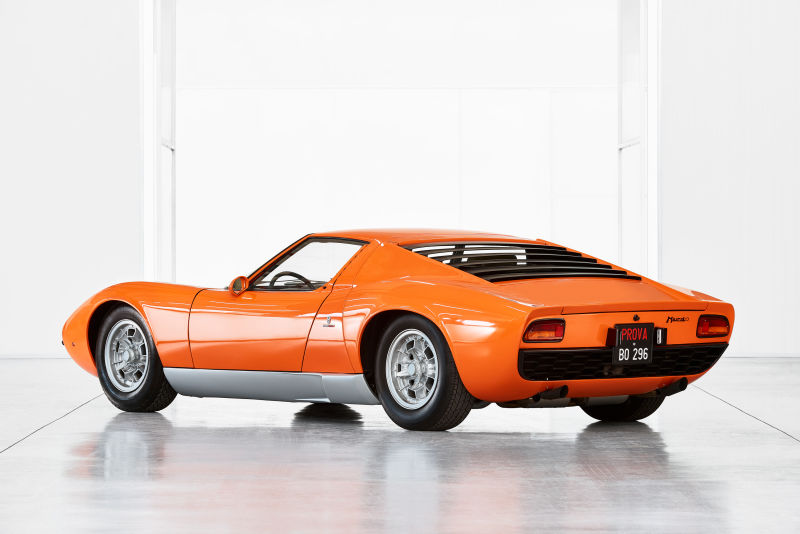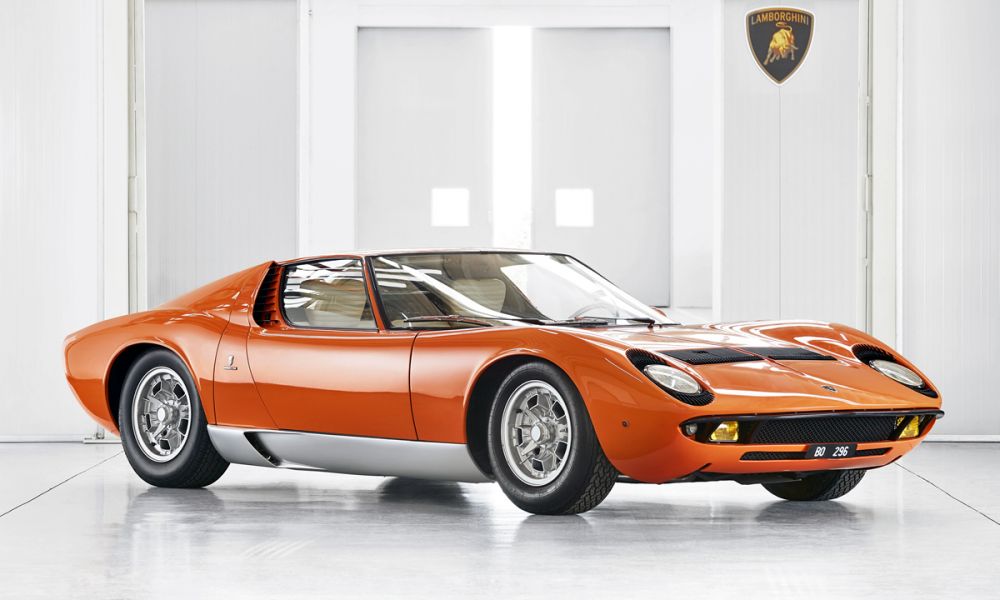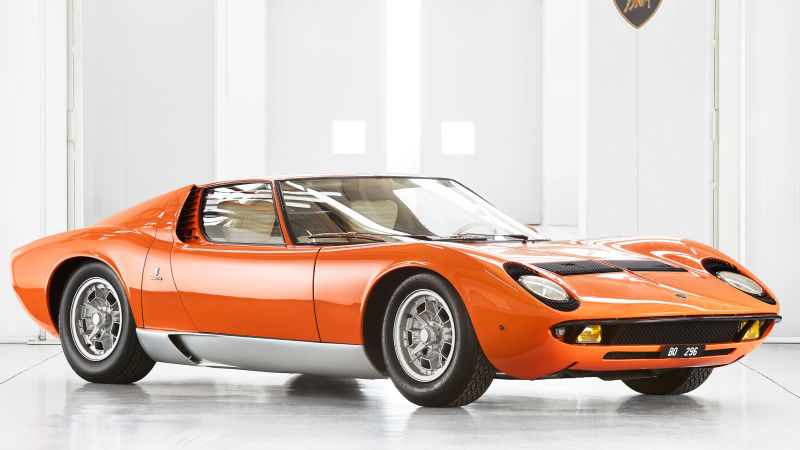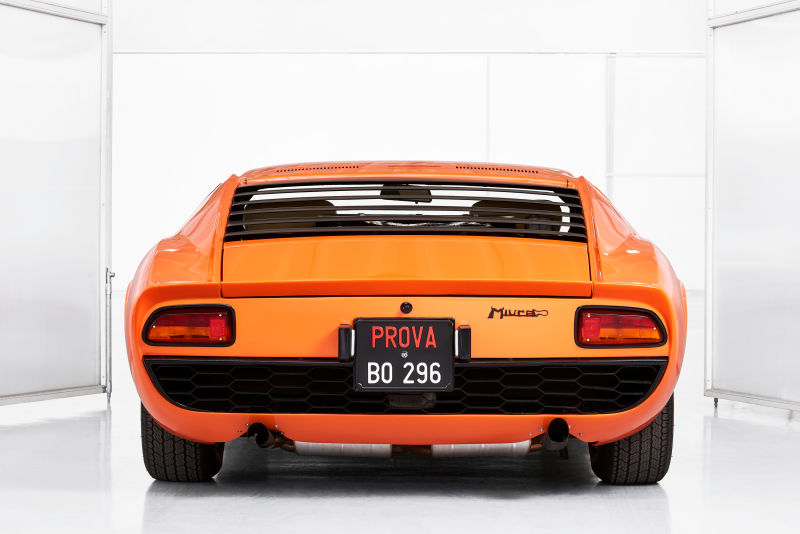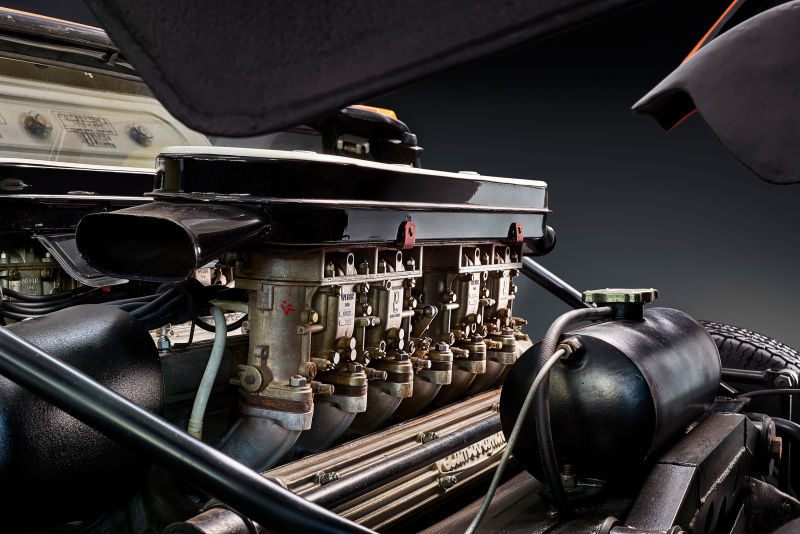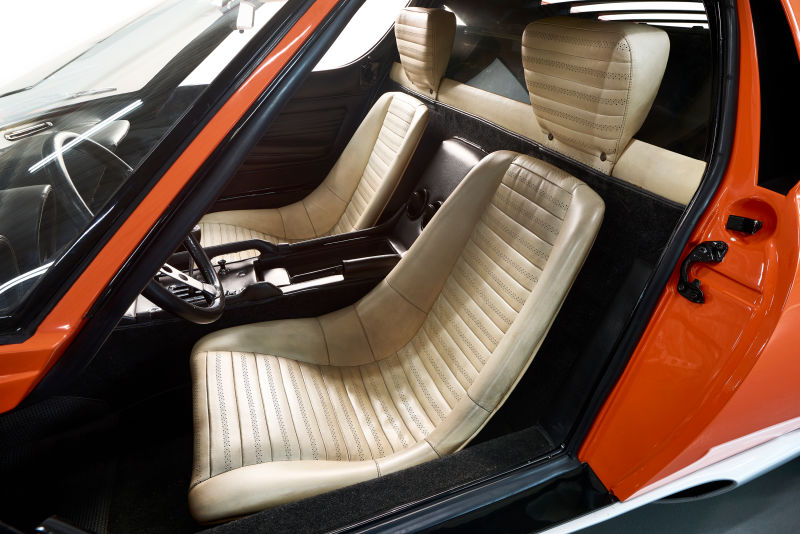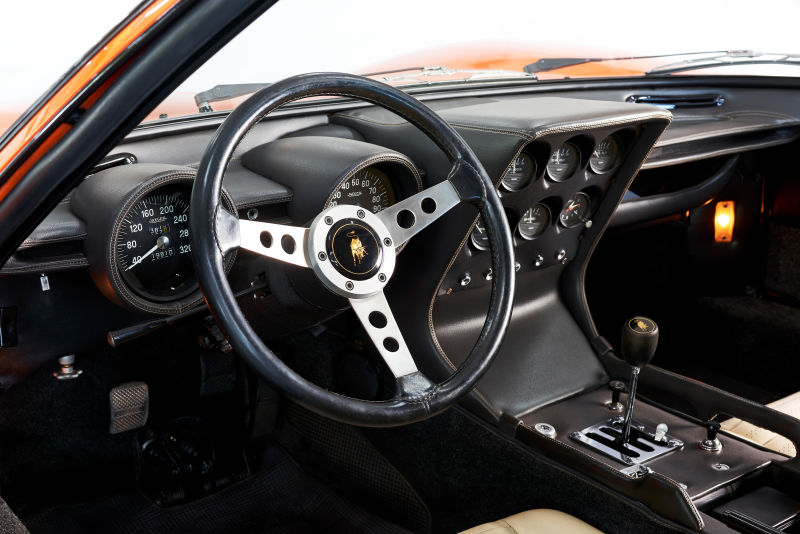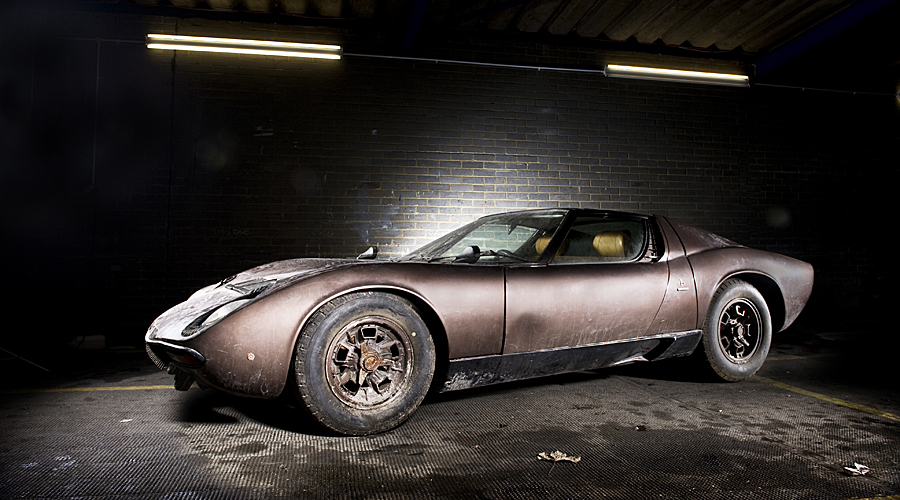The Ultimate Guide To The Lamborghini Miura: Review, Price, Specs, Videos, Pictures, Performance & More
Miura Vitals
Production: 1966–73
Units: 764 built
Designer: Marcello Gandini at Bertone
Layout: Transverse rear mid-engine
Engine: 3929 cc Naturally Aspirated V12
Transmission: 5-speed manual
Only three years after the first Lamborghini prototype appeared at the 1963 Turin Motor Show, Miura number 1 was parked on the Place du Casino during the 1966 Monaco F1 week. The car shared its name with the fierce fighting bulls from Seville and it was completely different from anything Ferrari had on offer. Ferruccio said “the Miura is for the keenest sporting driver who wants the ultimate in looks and performance.”1 It caused a stir that weekend and had to be one of Ferruccio Lamborghini’s best moments.
Before the Miura, Ferruccio had established himself as a successful industrialist and decided to take on Ferrari with a series of high-quality grand tourers known as the 350 GT and 400 GT. These laid foundations for the Miura, such as the V12 engine designed by ex-Ferrari engineer Giotto Bizzarrini to have as much available horsepower as possible. Initially, this high-revving, 3.5-liter V12 produced a maximum output of 360 bhp at 9800 rpm and was enlarged on the SV to 3929cc for a reported 385 bhp. For the Miura, it was formed from a single aluminum casting that combined the cylinder blocks, crankcase and transmission.
Gian Paolo Dallara and assistant Paolo Stanzani designed the unique steel tub chassis that placed Bizzarrini’s V12 engine directly behind the driver in a transverse position. They were inspired by both the Lola GT, a race car developed by Eric Broadley that lent its chassis tub design to the Ford GT; and the Austin Mini with its transverse engine that had a common crankcase for the engine and transmission. The final design was first presented as a bare chassis at the 1965 Turin Motor Show where everyone could admire its radical layout and only imagine what the final product would look like.
Although the Miura chassis design could be mistakenly interpreted as a race chassis, Ferruccio had a strict no-racing attitude. He wrote a policy in the company’s bylaws that prohibited racing and avoided the pitfalls of expensive development by trying to intercept Ford vs Ferrari at Le Mans. Instead, the Miura was destined to be a road car of the highest order.
At the Turin show, design of the Miura’s body was still up for grabs and at the end of the show Ferruccio gave Nuccio Bertone the job as he was well suited for series production at Carrozzeria Bertone SpA. Initial sketches were laid out by Giorgetto Guigiario who thought he was designing a new Bizzarrini. When he left the firm, Marcello Gandini finished the work which included a lower nose that repositioned the front radiator. Bertone then sent Gandini on vacation while he finalized the design himself before submitting to Lamborghini. Due to these three talented men, the Miura didn’t have a wrong line anywhere. Later, Carrozzeria Bertone became responsible for manufacturing the Miura bodies and interiors on chassis produced by Marchersi. Final installation of the engine, transmission and suspension were completed at Lamborghini’s factory in Santa’Agata Bolognese.
The first completed prototype was painted orange and personally driven by Bertone to the 1966 Geneva Motor Show where it became the highlight of the event and overshadowed the debuting Ferrari 330GTC. Furthermore, with a press release proclaiming 198 mph, everyone in Maranello took notice. A later trip down to Monte Carlo for the F1 weekend was another resounding success.
Initially, orders exceeded production and Lamborghini had to only worry about manufacturing. Several pre-production prototypes were built and tested which varied only slightly to the final production specification. Over time, upgrades and small details were changed, but a huge update called the SV was planned in 1971 starting with chassis 4758. The main focus of the SV was a new rear suspension that made the car much wider. Longer wishbones were fitted that added 1.5 inches of length. Furthermore, larger Campagnolo cast magnesium wheels were added with wider Pirelli Cintaurato tires. Many of these changes were undertaken by chief test driver Bob Wallace in conjunction with Claudio Zampolli and greatly improved handling of the Miura.
Eventually the oil crisis and lack of demand halted Miura production in 1973 after nearly 150 cars were completed. By this time, development emphasis had been placed on the Countach which the public first saw in 1971. In April of 1972 Ferruccio sold off his controlling shares of the Lamborghini, probably because he achieved everything he had set out to do with the Miura.
Lamborghini Miura Models & Specs
Very few cars managed to change the automobile world like the Miura. It was the first true supercar. It had a radical specification in relation to common engineering of the time. The Miura was endowed with a quad-cam V12 that sat transverse and behind the drivers. Immediately, everything from Ferrari to Aston Martin looked outdated by comparison upon release. It redefined the concept of a sports car.


Before the first production Miura was completed on April 20th of 1967, Lamborghini produced five developmental prototypes which were used for testing and as show cars. A total of five prototypes were built in 1966 and 1967 which progressed towards the final production specification. These cars were chassis 0502, 0862, 0706, 0961 and 0979. The first one appeared at the 1966 Geneva Motor Show as the Miura P400 GT, also known as the Sperimentale.
The first three of the prototypes featured counter-clockwise crankshaft rotation which later turned clockwise with car number four with the addition of an idler gear. These first three cars also featured a roof-mounted pop-out vents which were abandoned after car four due to leaking issues.
The first four cars benefit from a slightly lower roofline that was raised by car number five to offer additional headroom. Further distinguishing features of these cars include a lack of Lamborghini script on the rear, different rear window slats and more interior indicator lights.
Production Years: 1966 – 1967
Engine: 3.9 L Naturally Aspirated V12
Power: 350 hp @ 7,000 rpm
Torque: 300 lb-ft @ 5,500 rpm
0-60 mph: 6.3 seconds
0-100 mph: 14.3 seconds
Top Speed: 163 mph


The first supercar definitely stood out in looks, tech and performance. The Miura was the fastest production car in the world with a top speed of 163 mph and 0 to 60 mph in 6.3 seconds. It set new standards.
Production Years: 1966 – 1969
Engine: 3.9 L Naturally Aspirated V12
Power: 350 hp @ 7,000 rpm
Torque: 300 lb-ft @ 5,500 rpm
0-60 mph: 6.3 seconds
0-100 mph: 14.3 seconds
Top Speed: 163 mph


The second generation Miura was released at the 1968 Turin Motor Show with a number of detail upgrades both in and out of the car. It shared the same potent transverse V12 engine and Bertine-designed body from it’s predecessor released three years earlier. Inside Lamborghini fitted power windows to the Miura S and also offered optional air conditioning for the first time. Detail differences included a locking glove box.
The engine also received an overhaul which was good for 20 additional horsepower. This included new intake manifolds and different camshafts. Outside, the car received a new chrome trim piece around the window locking strip. Around 140 cars of this type were produced until the SV replaced the model in March of 1971.
Production Years: 1968 – 1971
Engine: 3.9 L Naturally Aspirated V12
Power: 370 hp @ 7,500 rpm
Torque: 287 lb-ft @ 5,500 rpm
0-60 mph: 5.5 seconds
0-100 mph: 12.3 seconds
Top Speed: 168 mph


There was only one factory built Roadster and it was created in 1968 by Marcello Gandini and Bertone for the Geneva Show. Ot featured larger air intakes, lower roll-over hoop, different taillights and a larger spoiler. It was more than just a chop job, it was dramatically different from production Miuras. As released at the show, the Roadster featured larger air intakes and a lower roll-over hoop which distinguished it from any other Miura. Other modifications included different taillights and a larger spoiler. As needed, the box section structure of the chassis was strengthened up to cope with additional loads usually absorbed by the roof.
Production Years: 1968 (One Off)
Engine: 3.9 L Naturally Aspirated V12
Power: 350 hp @ 7,000 rpm
Torque: 272 lb-ft @ 5,750 rpm
0-60 mph: 6.6 seconds
0-100 mph: N/A
Top Speed: 174 mph

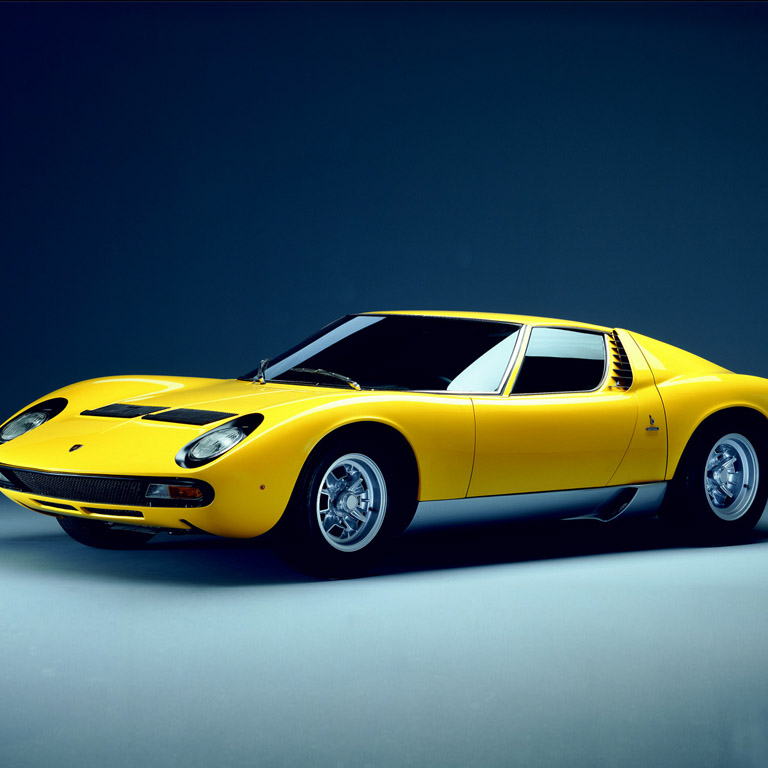
Over time, upgrades and small details were changed on the Miura, but a huge update called the SV was planned in 1971 starting with development chassis 4758. The main focus of the SV was a new rear suspension that made the car much wider. Longer wishbones were fitted that added 1.5 inches of length. Furthermore, larger Campagnolo cast magnesium wheels were added with wider Pirelli Cintaurato tires. Many of these changes were undertaken by chief test driver Bob Wallace in conjunction with Claudio Zampolli and greatly improved handling of the Miura.
The prototype is the first car to feature many of the SV upgrades that later typified the model. It was first displayed at the 1971 Geneva Auto Show in Fly Giallo with black leather interior. It was distinguished from the later production versions by numerous detail differences such as different front headlight surrounds, and interior details such as the ashtrays.
Production Years: 1971 (One Off)
Engine: 3.9 L Naturally Aspirated V12
Power: 385 hp @ 7,850 rpm
Torque: 295 lb-ft @ 5,750 rpm
0-60 mph: 5.75 seconds
0-100 mph: N/A
Top Speed: 170 mph

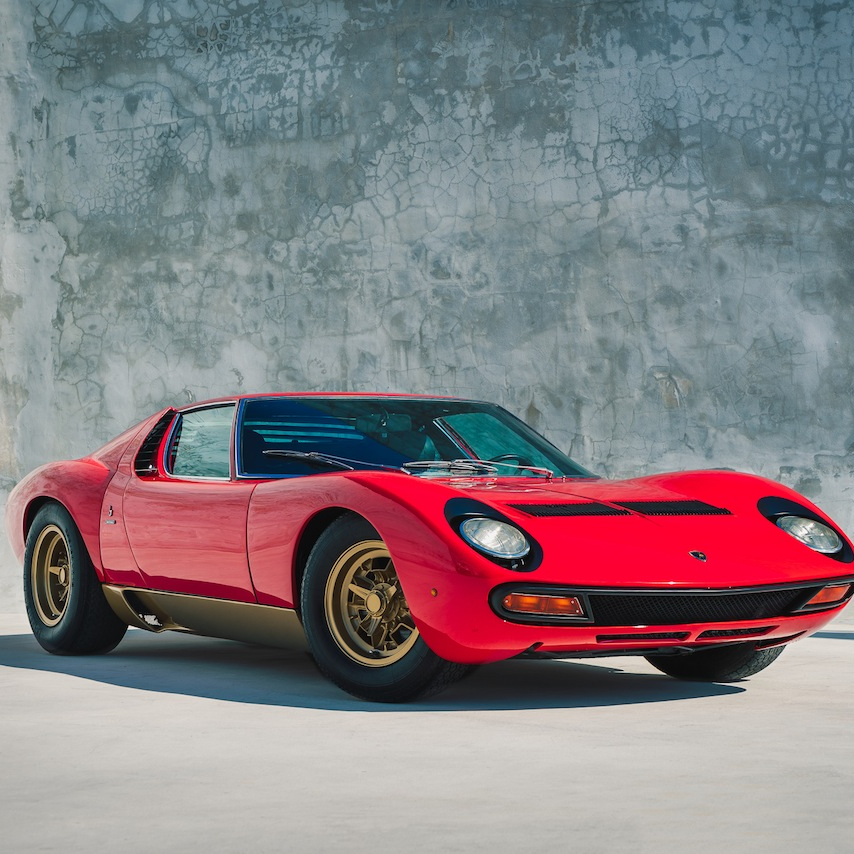
Over time, upgrades and small details were changed, but a huge update called the SV was planned in 1971 starting with chassis 4758. The main focus of the SV was a new rear suspension that made the car much wider. Longer wishbones were fitted that added 1.5 inches of length. Furthermore, larger Campagnolo cast magnesium wheels were added with wider Pirelli Cintaurato tires. Many of these changes were undertaken by chief test driver Bob Wallace in conjunction with Claudio Zampolli and greatly improved handling of the Miura.
To accommodate the new setup, the first SV chassis was sent to Bertone so Gandini could redesign the wider rear bodywork, but other features such as smooth headlight surrounds, Fiat Dino Spyder rear lights and better integrated front signals were added. The result was a much more aggressive car that emphasized the Miura’s rear-engine power. Options such as Borletti air conditioning were also offered for the first time and fitted as standard on cars shipped to America. Only 30 cars were fitted with this essential option.1
In the end, the Miura SV was a remarkable performer. Lamborghini’s own specification listed a horsepower of 380 bhp and a top speed of 180 mph but these were probably exaggerated figures compared to any regular production model. In fact, only around 350 bhp was produced from a standard SV engine and the top speed is actually slower than the P400S model due to the larger tires.
Production Years: 1971 – 1973
Engine: 3.9 L Naturally Aspirated V12
Power: 385 hp @ 7,850 rpm
Torque: 295 lb-ft @ 5,750 rpm
0-60 mph: 5.75 seconds
0-100 mph: N/A
Top Speed: 170 mph

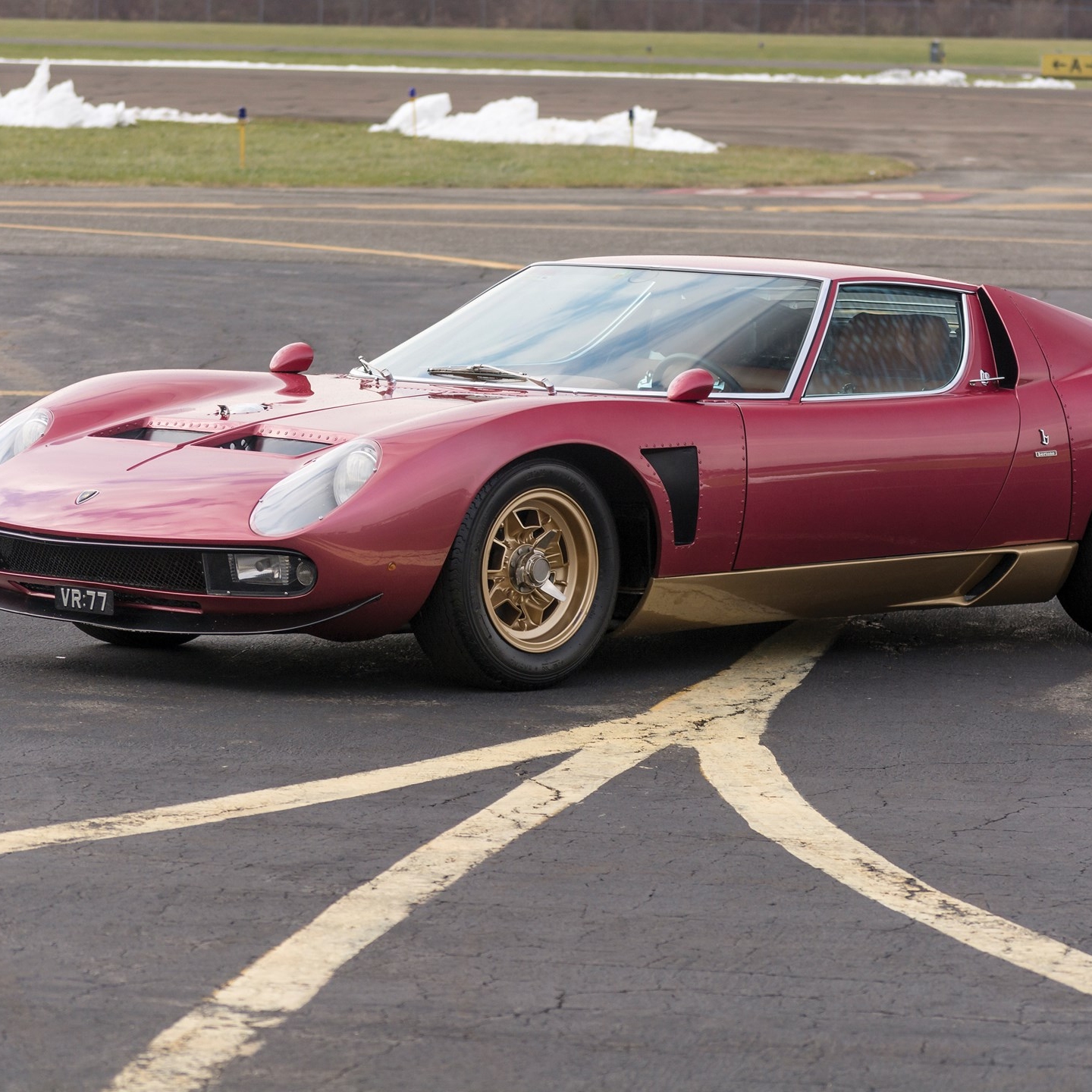
As if the Miura wasn’t already radical enough, Lamborghini let test driver Bob Wallace make an experimental version that was even better. Prepared as a quasi-racecar, it had no compromises to comfort. Known internally as ‘Miura Privata’ by the factory, the project was later named Jota to potential customers. Unfortunately the original Jota was lost in the crash, but the factory fitted some Jota modifications to several road cars and these became known as the SVJ.
Only one original Miura Jota was ever made, and it was Bob Wallace’s personal test car built around chassis #5084. He used it to test various ideas that would prepare the Miura for the track and improve overall performance. Having plenty of time on his hands, the Jota became evermore radical to the point were it eclipsed standard Miura performance by several degrees.
The main focus of Bob’s modifications was to decrease and balance weight. This meant the car had a completely stripped interior, single window wiper, Plexiglas windows and fixed headlights. Most of weight savings came from the use of a light-gauge aluminum alloy called Avional which was used for the new body, floor pan and front spoiler.
Production Years: 1971 – 1975
Engine: 3.9 L Naturally Aspirated V12
Power: 440 hp @ 8,500 rpm
Torque: 296 lb-ft @ 6,500 rpm
0-60 mph: 3.6 seconds
0-100 mph: N/A
Top Speed: N/A

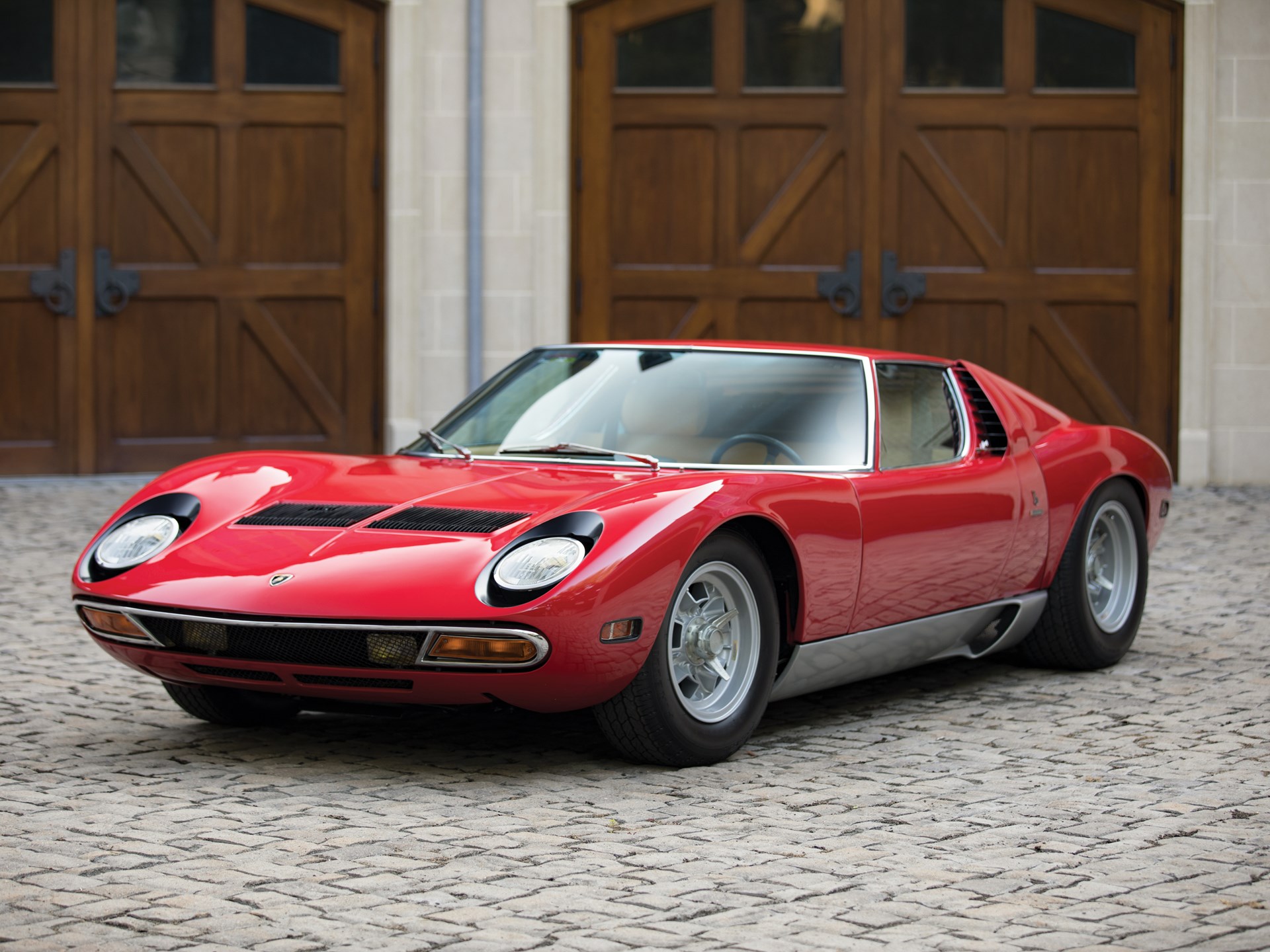
Best Lamborghini Miura – The Miura SV
This one is easy. The Lamborghini Miura SV, also known as the P400SV was easily the best Miura made. It was introduced in 1971. Essentially an updated Miura S, the SV was the last and most famous Miura. Produced in significantly smaller numbers than the previous versions, the SV is also the rarest Miura as well. Although visual updates were mostly subtle, the Miura SV featured extensive drivetrain and chassis upgrades that enhanced both the output and the handling of the car.
Lamborghini Miura Gallery & Photos
We pulled together some of our favorite photos of the Miura from our posts over the years. Don’t forget we have hundreds more photos of the Miura, just click on the models above to find them.
Lamborghini Miura Videos
There are hundreds of Miura videos on the internet. We spent way too long watching most of them over the years. We whittled down the list to find the three best videos about the legendary Miura. The first is from our friends at Petrolicious, who take a Miura out and really make you feel what it is like to experience history. The second is a great in-person drive in a Miura with the founder of the best car magazine on the planet (EVO). The third Miura video is the intro to the Italian Job, probably one of the most iconic movie scenes and easily a spot that cemented the Miura as a star.
[embedded content]
[embedded content]
[embedded content]





















